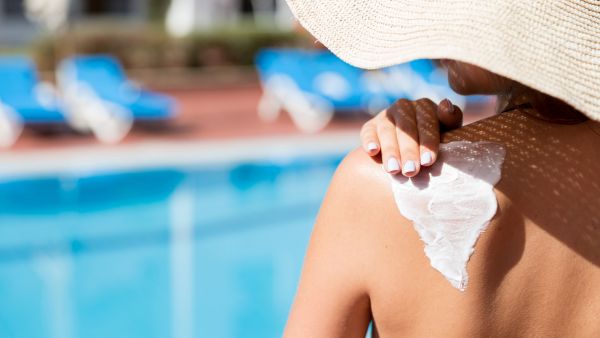Summer Skin SOS: Skincare Tips For a Healthy Glow
The perfect skincare routine adapts to your skin's needs in the moment. That includes making seasonal adjustments.
Summer months mean more daylight hours and greater sun exposure. But hot weather coupled with sun can result in dark spots, sunburn, and breakouts thanks to clogged pores from sweat and sunscreen.
An increase in UV exposure (yes, we're talking to you sunbathers!) can elevate free radical activity in the body. This oxidative stress can kick off an inflammatory cycle, triggering rosacea and other skin sensitivities.
To help your skin adjust to warmer weather we've put together a list of five tips for a healthy glow this summer.
Load up on free radical fighters
Antioxidants are the answer to keeping summer skin healthy. This is because antioxidants like Vitamin C, E, and polyphenols help neutralize free radical formation and oxidative stress brought on by sun exposure.
Reach for antioxidant-rich skincare products that absorb quickly so that antioxidants can start fighting free radicals right away.
Loaded with 2X the antioxidant power of Vit C from regenrative Swiss edelweiss, Aspen Dew Illuminating Essence works to neutralize free radicals and helps fight premature skin aging, loss of firmness, and elasticity.
Switch to a non-irritating botanical retinoid
Retinoids can sensitize skin to sun exposure and can incease your chances of getting a sunburn.
Consider reducing the frequency of retinoid use during summer months or better still, switch to a non-irritating botanical retinoid alternative like dew bean, found in our Aspen Dew Illuminating Essence.
As always, if you use a retinoid of any kind, like tretinoin, always apply sunscreen!
Use a fast-absorbing serum
Reach for fast-absorbing serums, like our Purist Delicate Skin Serum for moisture that doesn't leave skin feeling heavy or sticky.
Pomegranate seed oil is coveted for antioxidant and skin hydration, penetrating easily and deeply to create lasting, non-greasy moisture.
Decongest pores
Pores are more prone to get clogged in the summer thanks to our skin's increased sweat and oil production.
Look for non-comedogenic formulas to help balance skin and avoid breakouts. Chamomile helps to decongest pores and is also rich in flavonoids and antioxidants.
Guard against photo-aging
Aside from using your favorite SPF (50+ for your face), alpine botanicals liks pomegranate, arctic cranberry, camellia, and Nepalese goji, which can be found in The Purist, provide heightened defense against the visible signs of photo-aging.
Boost skin recovery
Soothing lavender has been used for centuries for skin recovery, and for good reason. If you are in the sun for extended periods this summer, consider post-sun exposure recovery. You can find a calming high-altitude lavender in The Alpine Phytonutrient Serum.
Pro Tips:
We recommend using The Purist or The Alpine during the day, and The Alpine after sun to get the best effect.
On especially hot summer day you can chill your Aspen Dew in the fridge for 20-30 minutes before applying for an extra cooling soothing skin treat.
For long-lasting featherlight hydration, Aspen Dew can also be enjoyed as a sole source moisturizer on extra humid summer days.
Whatever changes you make to your summer skincare routine, always listen to your skin and make adjustments accordingly.
Continue reading





